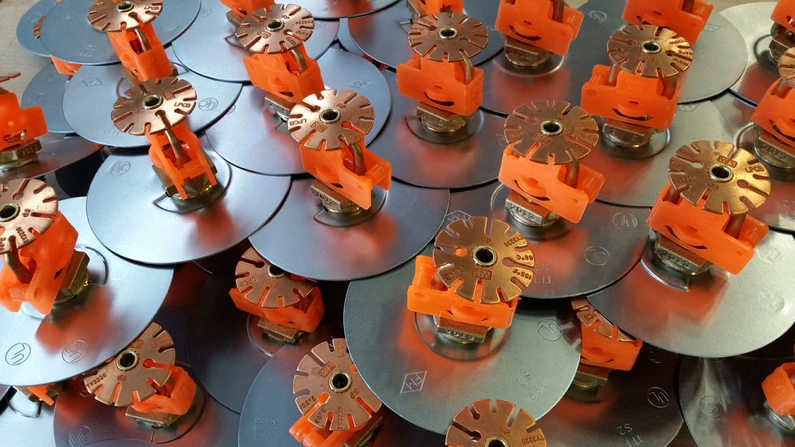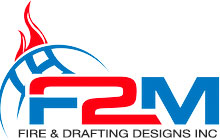Fire Sprinkler System Design
Fire sprinkler systems serve a great purpose of preventing fire damage in commercial buildings and households. Different types of fire sprinkler system design are available, each of which has varying working techniques. Choosing the best fire sprinkler system means designing a system of fire suppression that suits your needs and covers every angle of safety in terms of fire hazards and building code.

(Source)
The potential benefits of installing and maintaining a fire sprinkler design are various; some are below.
- Safety from physical injuries
- Corporate security
- Security of property from fire damages
- Confident workers in fire hazardous places
- A good reputation in terms of responsibilities as a landlord and industrial or commercial building owner
However, designing a fire sprinkler system might not be easy. Therefore, you can contact F2M Fire & Drafting Designs INC. through our website to benefit from quality services of fire system designs. Here are a few things to keep in mind when designing a fire sprinkler system.
Main Types of Fire Sprinkler Systems
Dry Pipe
This type of fire system operates slowly and needs thorough maintenance. For spaces such as warehouses, garages, and any other unheated places or spaces, “dry pipe” fire systems are the best. They have compressed air inside the pipes. Using numerous supply systems such as nitrogen bottles, electronic air compressors, this system lets out the air upon activation. This leads to a pressurized release of water, which extinguishes the fire.
Wet Pipe
Easy to install and maintain, this system of fire sprinklers contains water in the pipes at all times. Contrary to popular belief, water release can be simultaneous. This is the most common type of fire system in heated spaces.
Deluge
This type of fire sprinkler system has applications like places containing highly combustible and flammable components. These spaces may serve storage or operational purposes. With all sprinkler heads open at all times, a signal from an individual device such as a heat sensor or a smoke sensor triggers the release of water.
Fire Sprinkler System Design: Water Supply
Fire sprinkler systems heavily rely on the quality and quantity of water supply. Water is the main component for extinguishing and restricting the spread of fire. NFPA requires you to have an automatic water supply in the fire sprinkler system.
This ensures an uninterrupted supply of water and with no human interference. The need for professional engineers and designers is paramount. The sources for water supply can vary and include reservoirs, pools, water towers, ponds, or gravity tanks. Each type of water supply requires proper calculations pertaining to the capacity and the flow. These calculations determine how much water can flow from the source and the pressure it can generate.
Thus, it helps to accurately select and place pipes to ensure a safe and operable fire sprinkler system design. Calculations relate to flow test, for which the formula is as such:
Q=29.83 x C x d2 x
The foundation of fire sprinkler design lies in the water supply. Thus, a careful analysis of this factor is a must.
Buildings that Require Fire Sprinkler Systems
The next step in designing a fire sprinkler system is to know the building type. Whether it is a commercial, industrial, or residential building will help to determine the best fire sprinkler design.
The designers of the fire sprinkler system will cooperate alongside engineers and architects to draft out a fire sprinkler design. The final blueprint will be in accordance with NFPA rules and codes. The most common type of NFPA standard in use for designing a fire sprinkler system is the NFPA13.
Other Factors
Occupancy hazard is another factor. This helps measure the level of hazards that potentially exist. The amount of energy capable of releasing in the case of fires determines how much water is needed. This makes it easier to design the fire system. The products and components present in the building are subject to the term “occupancy hazard.”

(Source)
Further, the area of design also matters. The level and positioning of the building can make it difficult to supply water to all sprinkler heads at once. Therefore, considering the worst-case scenario helps in identifying any potential hindrances that can occur in the operation of the fire sprinkler system.
Call F2M For Your Fire Sprinkler System Design
At F2M Fire & Drafting Designs Inc., we are expert fire sprinkler system designers with over 20 years of experience in the NYC and tri-state area. Visit our website to learn more about our services and see some of our past projects.
F2M Fire & Drafting Designs Inc.
1231 Lafayette Ave, Fl 2
Bronx, New York, 10474
(718) 928-3009
Sources

[…] flow test of the water supply is necessary before performing hydraulics calculations for the fire sprinkler system. This information can be public, and you can get it from the municipal water department. However, […]
[…] belief, smoke is not what causes a room’s temperature to rise, and trigger the fire sprinkler system. Hence, preparing toast in the kitchen or smoking in the living room won’t trigger the fire […]
[…] be watchful of each building’s design. They need to specifically configure each fire sprinkler system so that it complies with the facility’s design to ensure that it is high functioning and saves […]
[…] engineers, architects, and fire sprinkler system designers consider BIM as the future of building modeling. Never forget the “I” in the BIM – it […]
[…] In areas vulnerable to earthquakes, constructors also have to make sure that non structural elements are also earthquake proof. These elements include all the mechanical workings in a building, including plumbing systems, electrical wiring, and, most importantly, fire sprinkler systems. […]
[…] the whole fire sprinkler design process comes under the specialty sprinkler designers and engineers, you can learn the basics by […]
[…] do not merely arrive at the commercial building or residential space with pre-made fire sprinkler designs and other fire protection system details. In fact, it is their job to learn about the specific […]